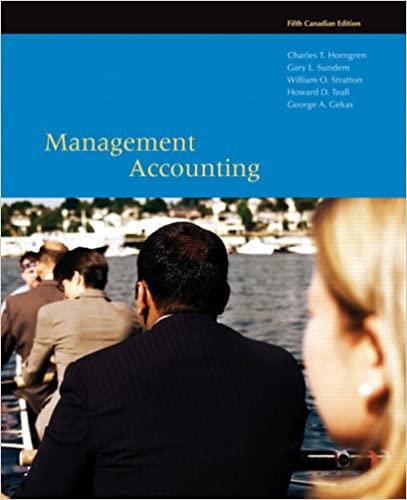Question
Refer to the proposal to add a retail pharmacy mini-case study in Chapter 29. Required Build a Business Plan for this proposal. Prepare the service





Refer to the proposal to add a retail pharmacy mini-case study in Chapter 29. Required Build a Business Plan for this proposal. Prepare the service description using your consumer knowledge of a retail pharmacy (if necessary). Of course this retail pharmacy will be located within the hospital, but its purpose is to dispense prescriptions to carry off-site and use at home. Thus it operates pretty much like the neighborhood retail pharmacy that you use yourself. Use the information provided in the retail pharmacy Mini-Case Study 1 in Chapter 29 to prepare the financial section of the Business Plan. Use your imagination to create the marketing segment and the organization segment.
CHAPTER Mini-Case Study 1: Proposal to Add a Retail Pharmacy to a Hospital in the 29 Metropolis Health System Sample General Hospital belongs to the Metropolis Health System. The new chief financial officer (CFO) at Sample Hospital has been attempting to find new sources of badly needed revenue for the facility. Consequently, the CFO is preparing a proposal to add a retail pharmacy wii the hospital itself. If the proposal is accepted, this would generate a new revenue stream. The CFO has prepared four exhibits, all of which appear at the end of this case study. Exhibit 29-1, a the-year retail pharmacy profitability analysis, is the primary document. It is supported by Exhibit 29-2, the retail pharmacy proposal assumptions. The profitability analysis is further supported by Exhibit 29-3, a year1 monthly income state- ment detail. Finally, Exhibit 29-4 presents the supporting year 1 monthly cash flow detail and assumptions. When the controller reviewed the exhibits, she asked how the working capital of $49,789 was derived. The CFO explainedt represents 3 months of departmental expense He also explained that the cost of drugs purchased for he first 60 days was offset by these purchases accounts payable cycle, so the net effect was 0. In essence, the vendors were financing the drug purchases. T hus, the working capital reconciled as follows: Working Capital Cost of drugs (2 months) Vendor financing (accounts payable(303,400) Departmental expense (3 months) Total Working Capital Required $303,400 $49.789 $49,789 The controller also noticed on Exhibit 29-4 that the cost of renovations to the building is estimated at $80,000 and equipment purchases are estimated at $50,000 for a total capital expenditure of $130,000. The building renovatios are depreciated on a straight- line basis over a useful life of 15 years, whereas the equipment purchases are depreciated on a straighine basis over a useful life of 5 years. The equired capital is proposed to be obtained from hospital sources, and no borrowing would be necessary. In addition, the total capital expenditure is projected to be retrieved through operating cash flows before the end ofyear 1 125 CHAPTER Mini-Case Study 1: Proposal to Add a Retail Pharmacy to a Hospital in the 29 Metropolis Health System Sample General Hospital belongs to the Metropolis Health System. The new chief financial officer (CFO) at Sample Hospital has been attempting to find new sources of badly needed revenue for the facility. Consequently, the CFO is preparing a proposal to add a retail pharmacy wii the hospital itself. If the proposal is accepted, this would generate a new revenue stream. The CFO has prepared four exhibits, all of which appear at the end of this case study. Exhibit 29-1, a the-year retail pharmacy profitability analysis, is the primary document. It is supported by Exhibit 29-2, the retail pharmacy proposal assumptions. The profitability analysis is further supported by Exhibit 29-3, a year1 monthly income state- ment detail. Finally, Exhibit 29-4 presents the supporting year 1 monthly cash flow detail and assumptions. When the controller reviewed the exhibits, she asked how the working capital of $49,789 was derived. The CFO explainedt represents 3 months of departmental expense He also explained that the cost of drugs purchased for he first 60 days was offset by these purchases accounts payable cycle, so the net effect was 0. In essence, the vendors were financing the drug purchases. T hus, the working capital reconciled as follows: Working Capital Cost of drugs (2 months) Vendor financing (accounts payable(303,400) Departmental expense (3 months) Total Working Capital Required $303,400 $49.789 $49,789 The controller also noticed on Exhibit 29-4 that the cost of renovations to the building is estimated at $80,000 and equipment purchases are estimated at $50,000 for a total capital expenditure of $130,000. The building renovatios are depreciated on a straight- line basis over a useful life of 15 years, whereas the equipment purchases are depreciated on a straighine basis over a useful life of 5 years. The equired capital is proposed to be obtained from hospital sources, and no borrowing would be necessary. In addition, the total capital expenditure is projected to be retrieved through operating cash flows before the end ofyear 1 125Step by Step Solution
There are 3 Steps involved in it
Step: 1

Get Instant Access to Expert-Tailored Solutions
See step-by-step solutions with expert insights and AI powered tools for academic success
Step: 2

Step: 3

Ace Your Homework with AI
Get the answers you need in no time with our AI-driven, step-by-step assistance
Get Started


